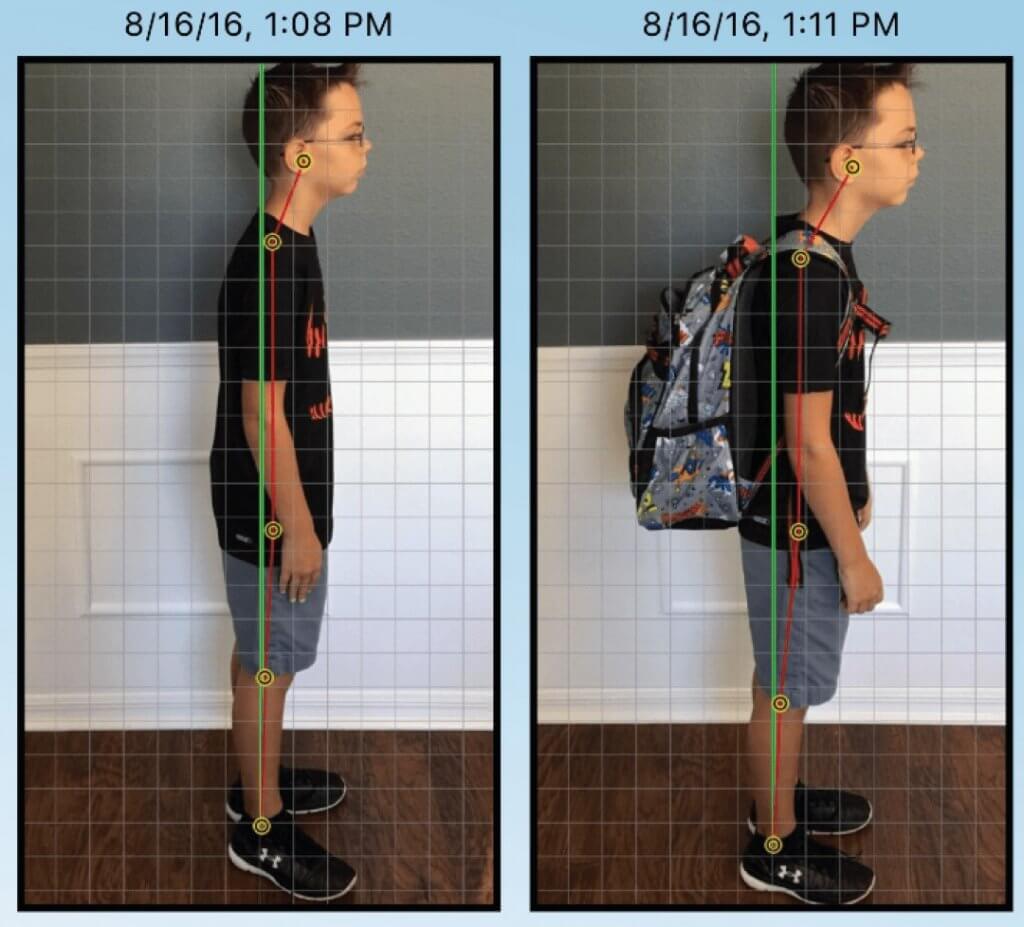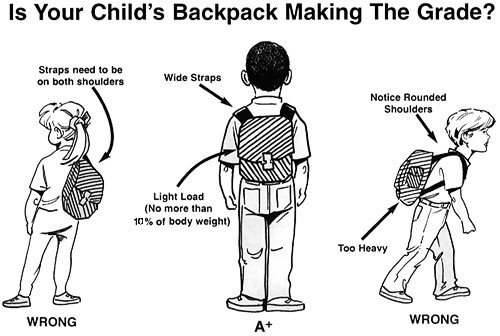With school starting again soon, I’m sure all you parents out there are looking forward to the break. But as your child goes marching off with their backpack on, make sure to give them the best possible advice of how not to suffer, under the burden of books and bags:
Pack light
The backpack should not weigh more than 10% of your child’s body weight. As the weight of the backpack increases, their body has to accommodate for this by increasing forward lean and forward head posture.

Stop often at school lockers
Encourage your child to only carry what is necessary. If they have access to a locker then they should just carry what they need for a short period of time until they can swap in/out the books.
Always use both shoulder straps
If your child wears their backpack on one shoulder (even weighs only 10% of your child’s own body weight) it can increase curvature of their spine. It can also change the angle of their pelvis tilting it forward loading the lower back joints. As a result this can cause decreased walking deficiency, restricted upper limb movement, headaches, lower back and neck pain.

Tighten the straps
Ensure that the backpack is close to their body. The straps should hold the pack two inches above the waist.
Organize the backpack carefully
Pack heavier items closest to the back to minimize the movement of their center of gravity. This will minimize stress and strain on muscle groups.
Bend using both knees
When wearing or picking up their backpack encourage them to bend at the knees (squat lifting) and not to bend at the waist (bad lifting).
Learn back-strengthening exercises
Ask your sports therapist for exercises to help them build up the muscles used to carry a backpack.
Get their spines checked
With 77-88% of children reporting musculoskeletal pain arising in the neck, shoulders or upper back, it’s important to make sure their spine continues to work well. Otherwise these issues can become much bigger problems and lead to longer term postural changes.


